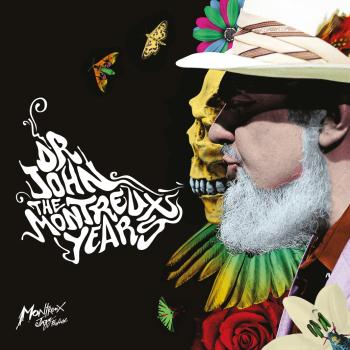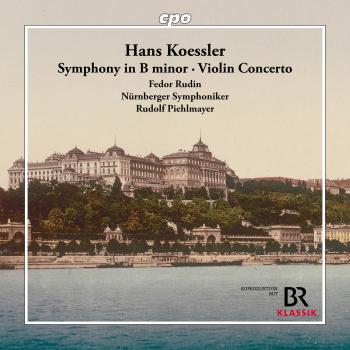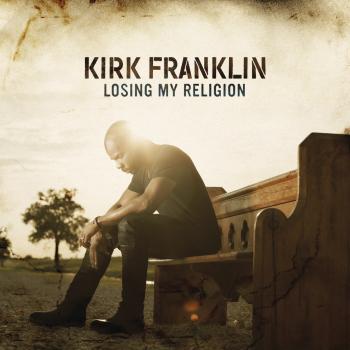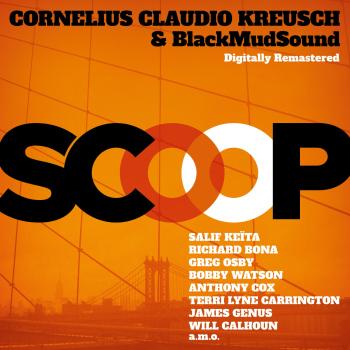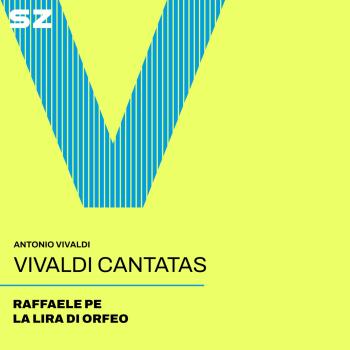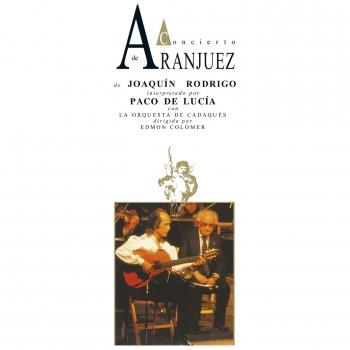
Cositas Buenas (Remastered 20th Anniversary Edition) Paco de Lucía
Album info
Album-Release:
2004
HRA-Release:
14.11.2025
Label: Universal Music Spain S.L.
Genre: Latin
Subgenre: Contemporary Latin
Artist: Paco de Lucía
Composer: Paco de Lucía (1947-2014)
Album including Album cover
I`m sorry!
Dear HIGHRESAUDIO Visitor,
due to territorial constraints and also different releases dates in each country you currently can`t purchase this album. We are updating our release dates twice a week. So, please feel free to check from time-to-time, if the album is available for your country.
We suggest, that you bookmark the album and use our Short List function.
Thank you for your understanding and patience.
Yours sincerely, HIGHRESAUDIO
- 1 Patio Custodio (Bulería / Remastered 2025) 04:44
- 2 Cositas Buenas (Tangos / Remastered 2025) 04:23
- 3 Antonia (Bulería Por Soleá / Remastered 2025) 06:28
- 4 El Dengue (Rumba / Remastered 2025) 04:03
- 5 Volar (Bulería / Remastered 2025) 05:30
- 6 El Tesorillo (Tientos / Remastered 2025) 04:39
- 7 Que Venga El Alba (Bulería / Remastered 2025) 04:11
- 8 Casa Bernardo (Rumba / Remastered 2025) 04:12
Info for Cositas Buenas (Remastered 20th Anniversary Edition)
For four decades, Spanish guitarist Paco de Lucia's jazzy, Mephisto-like technique redefined flamenco. This album, which means 'Good Small Things,' is de Lucia’s first release in five years, and it's been worth the wait. Most of the eight tracks feature just de Lucia, a chorus of vocalists, percussion, and the zesty handclaps called palmas. Lucia and company take you through the Moorish, Jewish, and Gypsy inventions and dimensions of flamenco, from the buleria 'Patio Custodio' and the torrid tientos 'El Tesorillo' to the moody, mid-tempo buleria por solea 'Antonia'. Guitarists Juan D’ Anyelica and Tomatito join de Lucia on 'El Dengue', and 'Que Vengo el Alba', which also features a vocal track from the late singer Camaron de la Isla. The last song, 'Casa Bernardo', with bassist Alain Perez, jazz trumpeter Jerry Gonzalez, and Latin pop star Alejandro Sanz on the guitar-like tres, foreshadows the future of this ancient and inventive art form.
"On his first outing in five years, and the first of the new century, flamenco guitarist Paco De Lucia has given us one of the most sublime recordings in his long career. This collection of "Good Little Things" (Cositas Buenas) is a step away from Nuevo flamenco, and back to the grain of the source music itself. It is a record full of handclapped rhythms, organic spare percussion, and burning, passionate songwriting and singing. The various singers -- including Paco himself -- wail, chant, moan, and ecstatically intone his new songs to the sheer rough-hewn grace of his playing. Most tracks are done in the canonical style of guitar, and voice with handclap accompaniment, but there are two -- the smoking, burning black soul of "El Dengue" and "Que Venga el Alba," on which he is accompanied by another guitarist. On the album's final cut, "Cassa Bernardo," a rumba, Jerry Gonzalez adds his mariachi trumpet to the proceedings. Cositas Buenas is an album that careens across the history of flamenco. While rooted in antiquity, it nonetheless points the way to a new music, one that extrapolates rhythm and harmony and adds syncopation, texture, depth, and multi-layered harmonics to the original framework. It is transcendentally beautiful if overwhelming in its passion and the sheer joy of performance. Indeed, Cositas Buenas sets a new standard for modern flamenco music and acts as the true bridge between the ancient and the future. No one but a master who cares nothing for his laurels could have articulated such a work." ( Thom Jurek, AMG)
Paco de Lucía, classical guitar, lute, bouzouki, mandolin, flamenco vocals, palmas, chorus
Juan D'Anyelica, guitar
Tomatito, guitar
Pirana, percussion
Alain Perez, bass
Alejandro Sanz, tres
Jerry Gonzalez, trumpet
Antonio El Negro, palmas, chorus
Montee Cortes, flamenco vocals, palmas, chorus
Camaron De La Isla, flamenco vocals
Tana, flamenco vocals, palmas, chorus
Potito, flamenco vocals, palmas, chorus
Diego El Cigala, palmas, chorus
Angela Bautista, palmas, chorus
Guadiana, palmas, chorus
Digitally remastered
Paco de Lucía (Francisco Gustavo Sánchez Gomes)
Richard Chapman described the Spanish guitar virtuoso Paco de Lucía as a giant in the world of flamenco in his book “Guitar: Music, History, Players.” Indeed, no other musician has revolutionized the role of the guitar in flamenco music as much as Paco. In his nearly 50-year solo career, he has introduced legions of new fans to flamenco and Spanish guitar music worldwide and influenced several generations of young flamenco guitarists.
Paco de Lucía was born Francisco Sánchez Gómez on December 21, 1947, in the southern Spanish port city of Algeciras. From the age of seven, he learned to play guitar under the tutelage of his father, Antonio Sánchez, and his older brother, Ramón (stage name: Ramón de Algeciras). José (Pepe de Lucía), a third son of Antonio Sánchez, also pursued a flamenco career as a singer. Eleven-year-old Paco made his first public appearance in 1958 at a local radio station. The following year, he and his brother Pepe won a prize at an international flamenco competition. Five years later, at the age of sixteen, he toured New York with the company of dancer José Greco, where he met the two greats Sabicas and Mario Escudero, who greatly influenced him. Barely back home, Paco moved with his family to Madrid, where he quickly made a name for himself.
Paco made his first public appearance in 1958 at the age of eleven. In 1967, he recorded “La Fabulosa Guitarra de Paco de Lucía,” his first album under his own name. With the legendary singer Camarón de la Isla, Paco recorded ten albums in the following years, which made him famous throughout the flamenco world. In 1973, with his fourth solo album, “Fuente Y Caudal,” and its hit single “Entre dos aguas,” he succeeded in breaking with flamenco conventions and venturing into new musical territory. Although Paco had already accompanied the Spanish saxophonist Pedro Iturralde on his 1967 album “Flamenco Jazz,” he initially continued to follow the traditional flamenco style on his own recordings.
Through his acquaintance with jazz guitarists John McLaughlin, Larry Coryell, and Al Di Meola, Paco's musical horizons continued to expand from the mid-1970s onward. When he recorded the historic guitar trio album “Friday Night in San Francisco” with McLaughlin and Di Meola in 1980, he was catapulted into the international spotlight. Further important collaborations with jazz musicians followed, including one with pianist Chick Corea on the 1982 album “Touchstone.” It wasn't until 1987, with the album “Siroco,” that he returned to his flamenco roots. After that, Paco consistently presented himself on his own albums as a versatile composer and guitarist, while also collaborating with artists as diverse as Brazilian singer Djavan, opera stars Placido Domingo and Luciano Pavarotti, rocker Bryan Adams, jazz trumpeter Wynton Marsalis (“Vitoria Suite,” 2010), and Latino pop singer Alejandro Sanz.
Two of his last albums won Latin Grammy Awards: “Cositas Buenas” in 2004 and “En Vivo – Conciertos Live In Spain 2010” in 2012. His final album, “Canción Andaluza”—recorded shortly before Paco's death on February 25, 2014—was hailed in Spain as the “soundtrack of his life.” In 2016, a recording of a concert Paco de Lucía gave in 1987 as a duo with John McLaughlin (“Paco & John: Live At Montreux 1987”) was released posthumously for the first time as a double CD with a DVD. The 27-CD box set “Integral” also contains all of the guitarist's albums released up to 2004.
This album contains no booklet.

